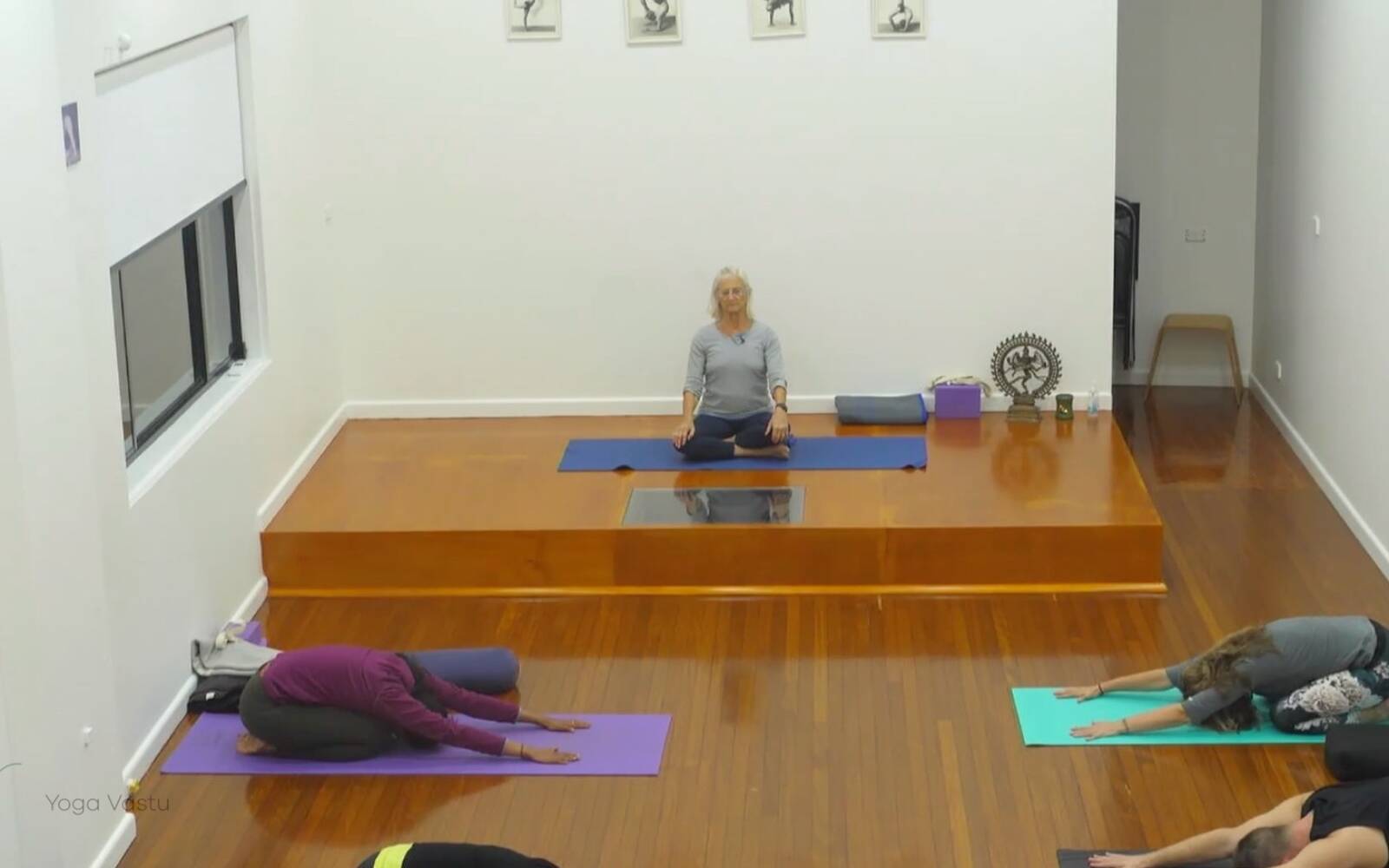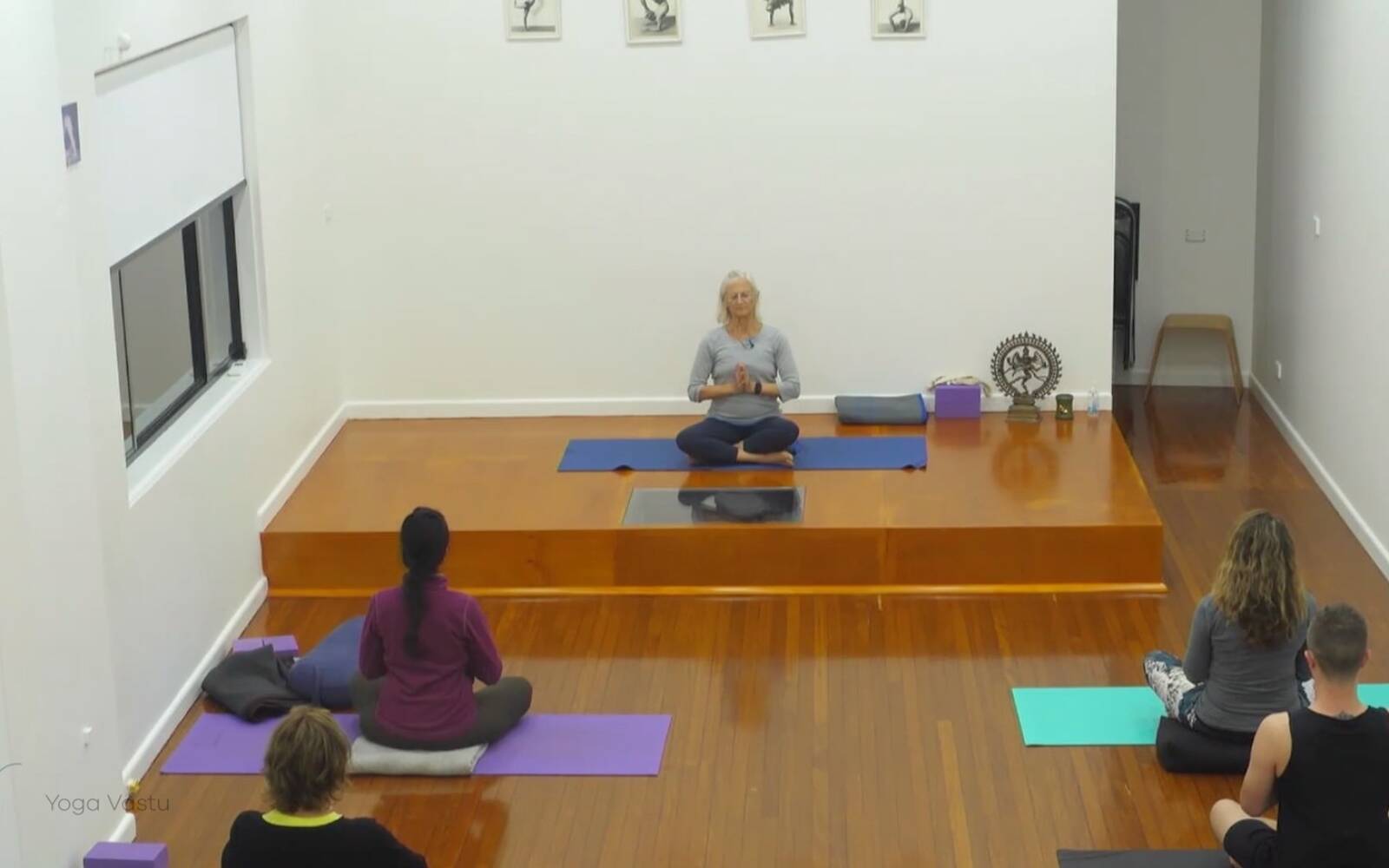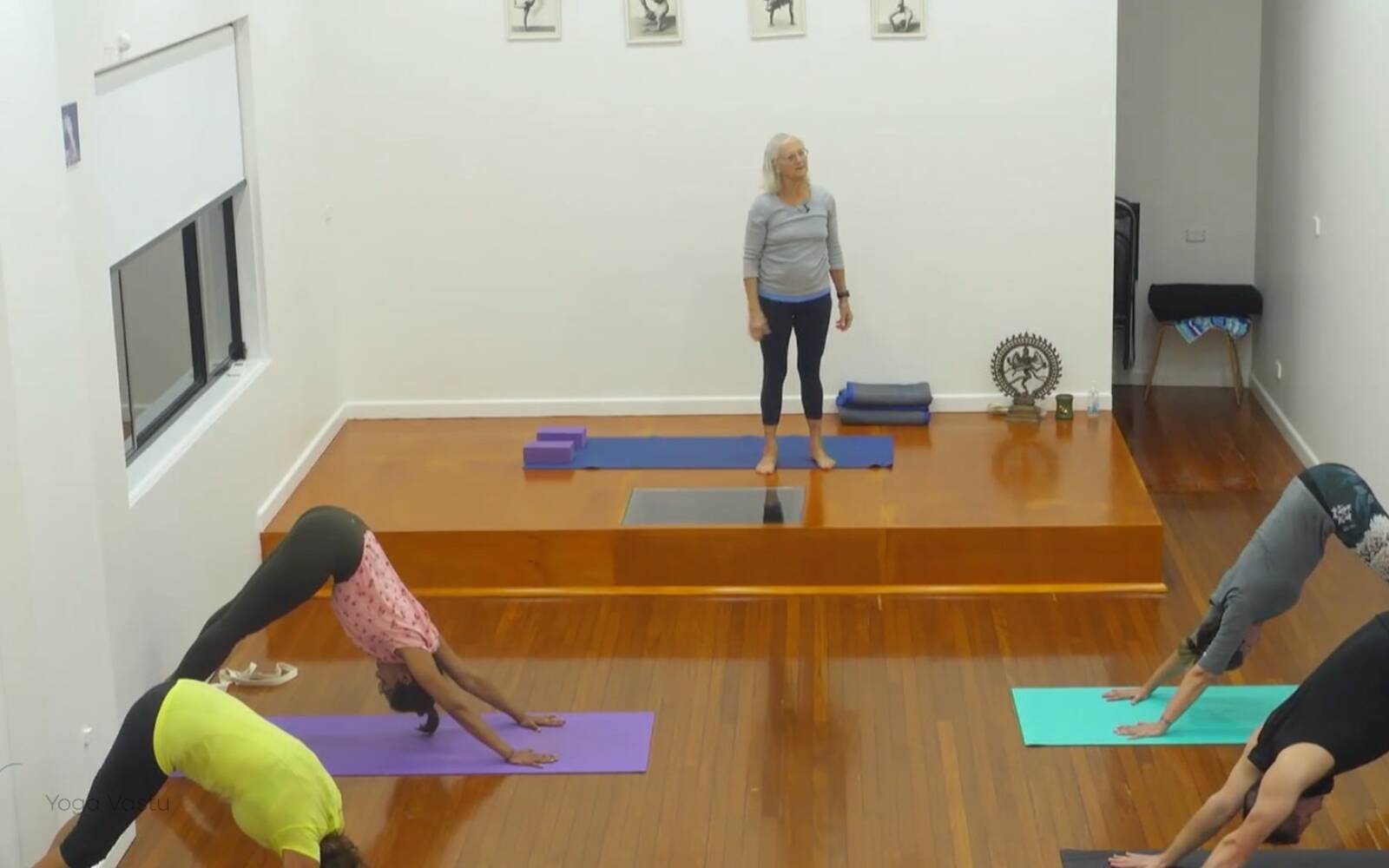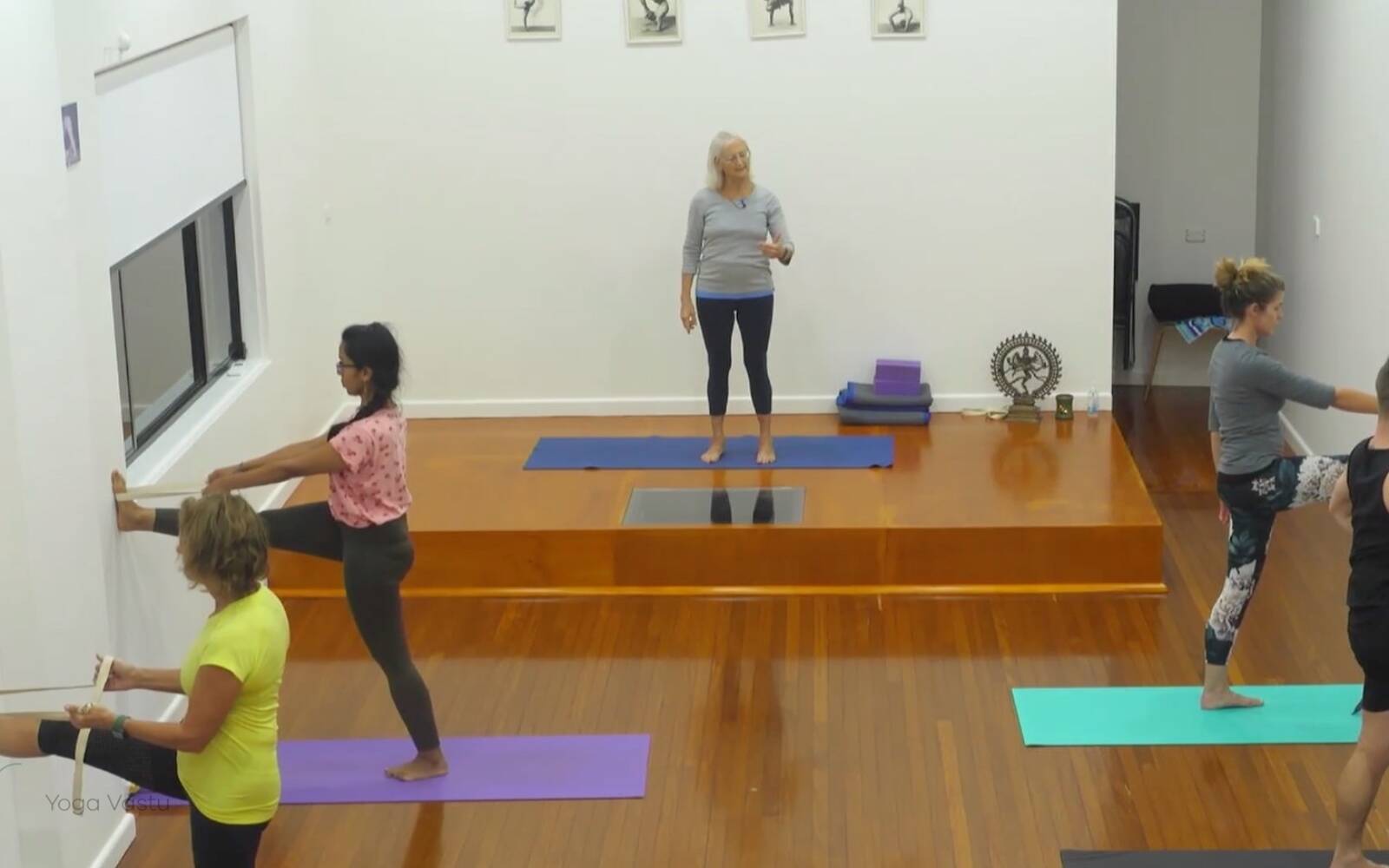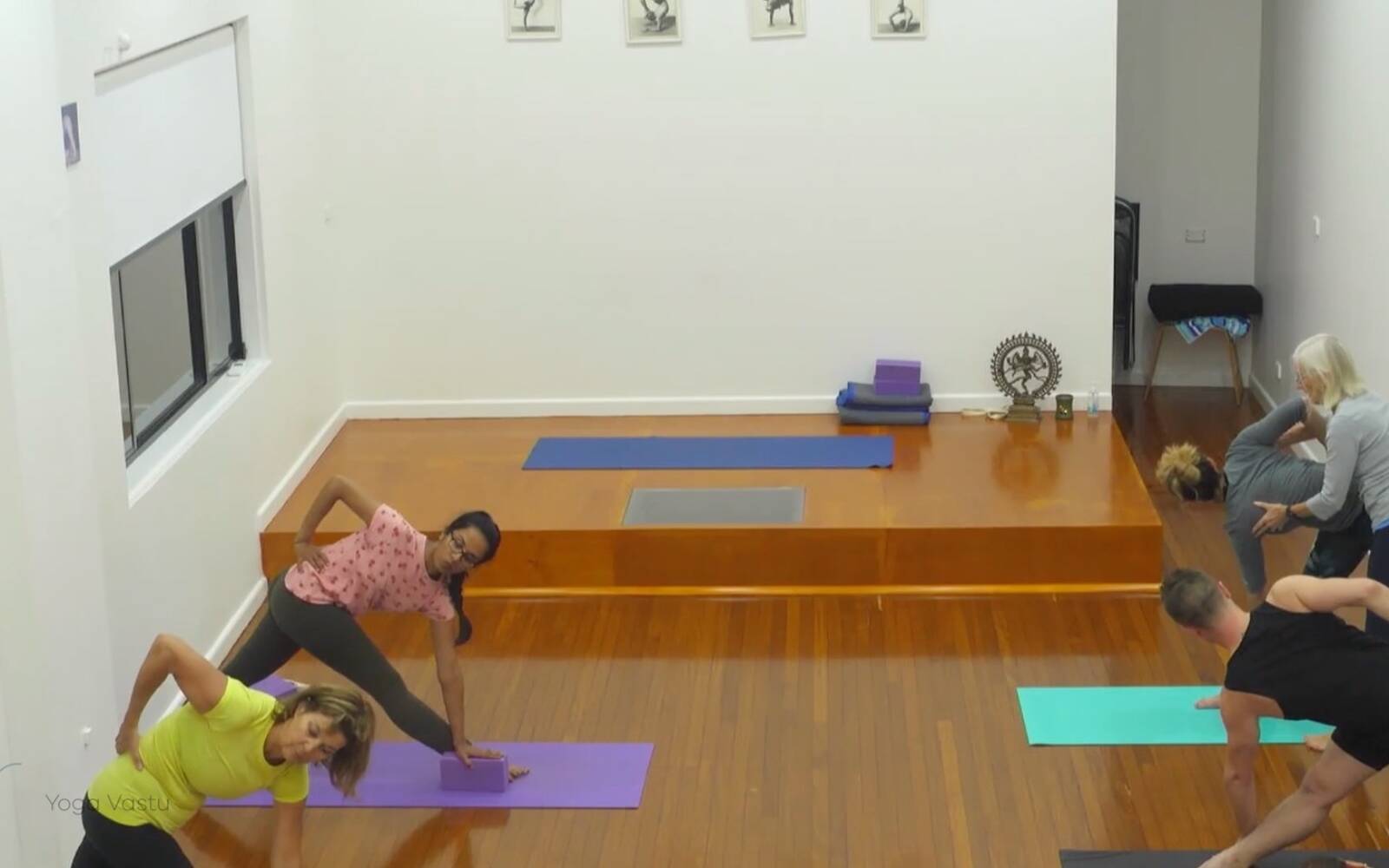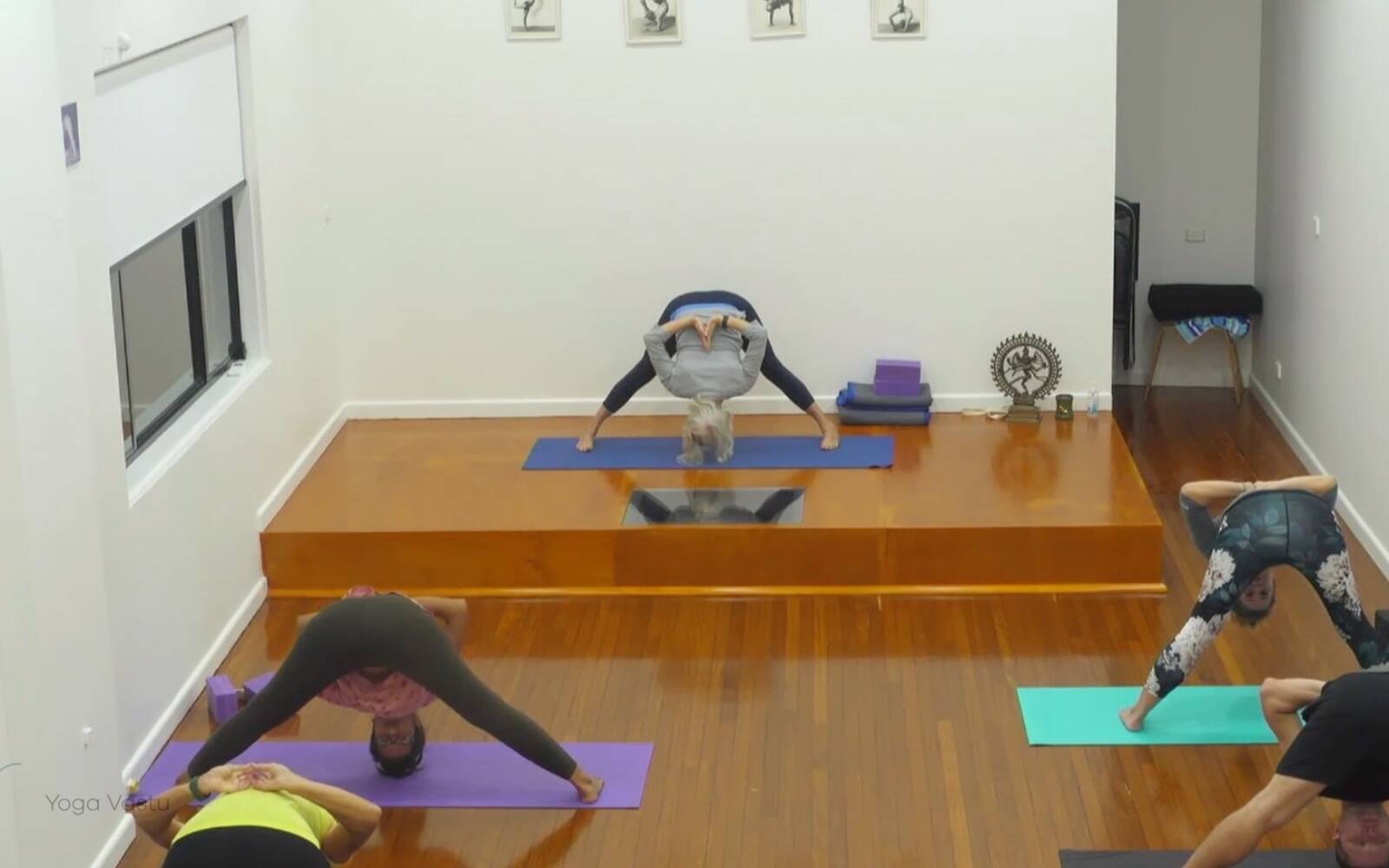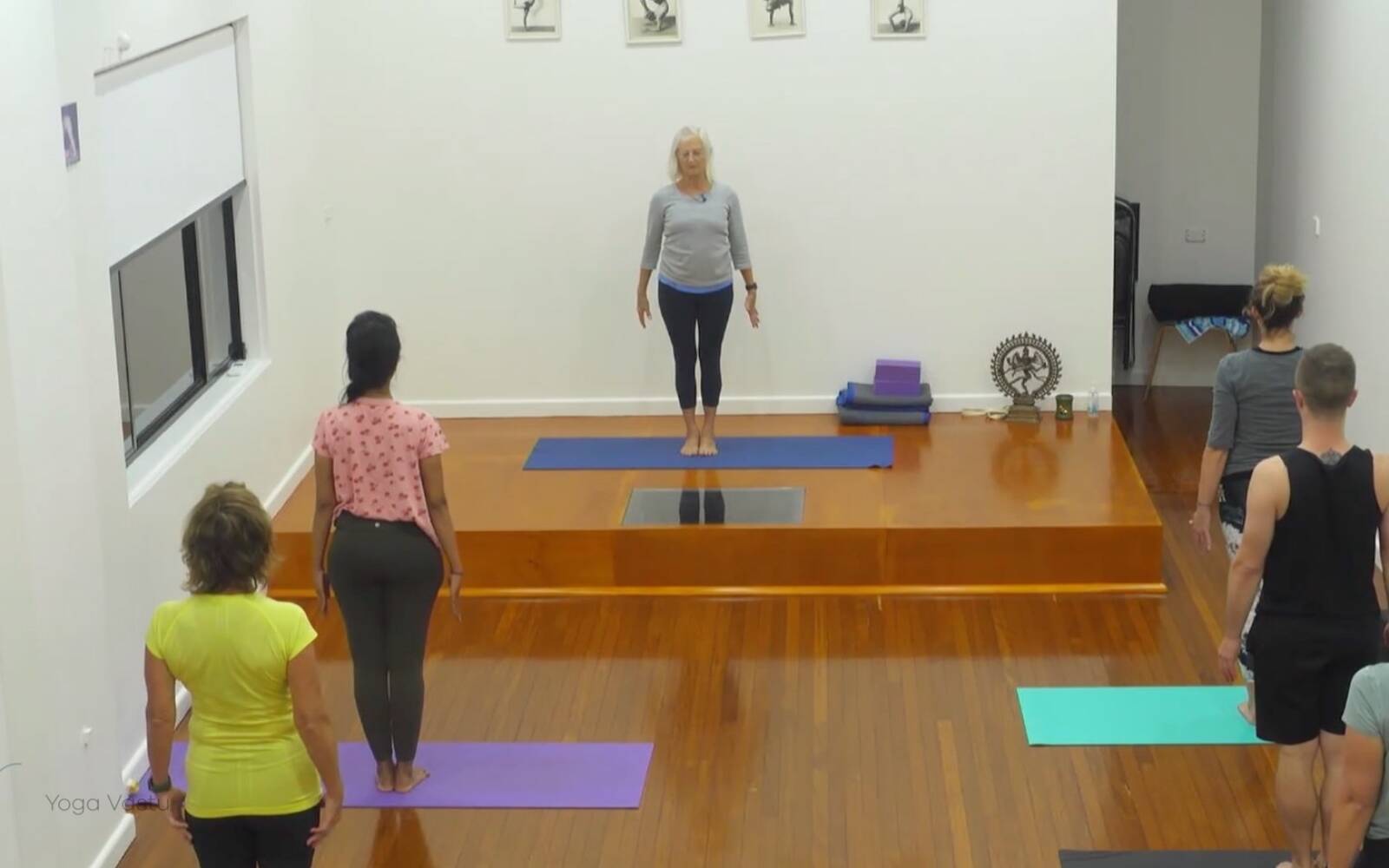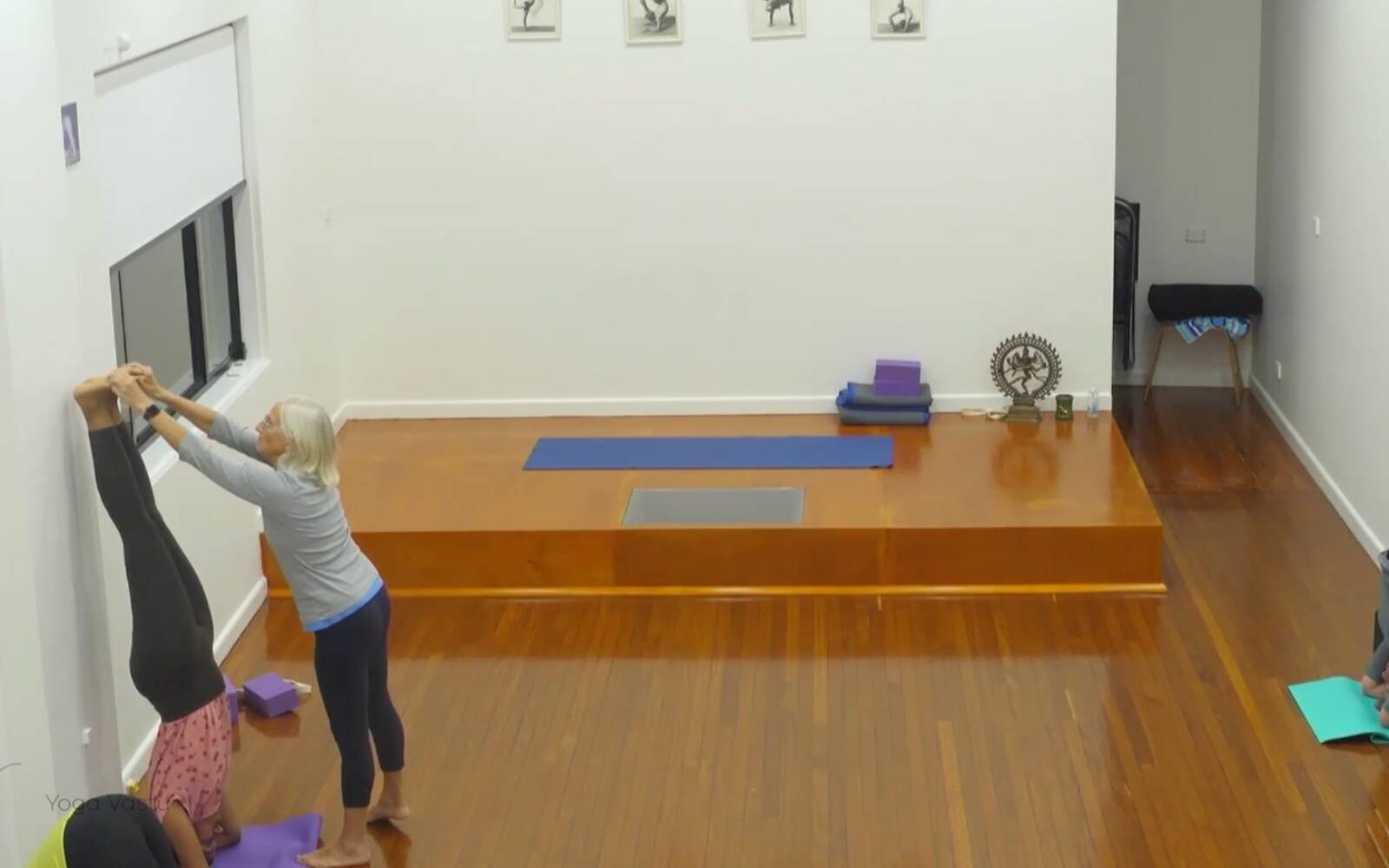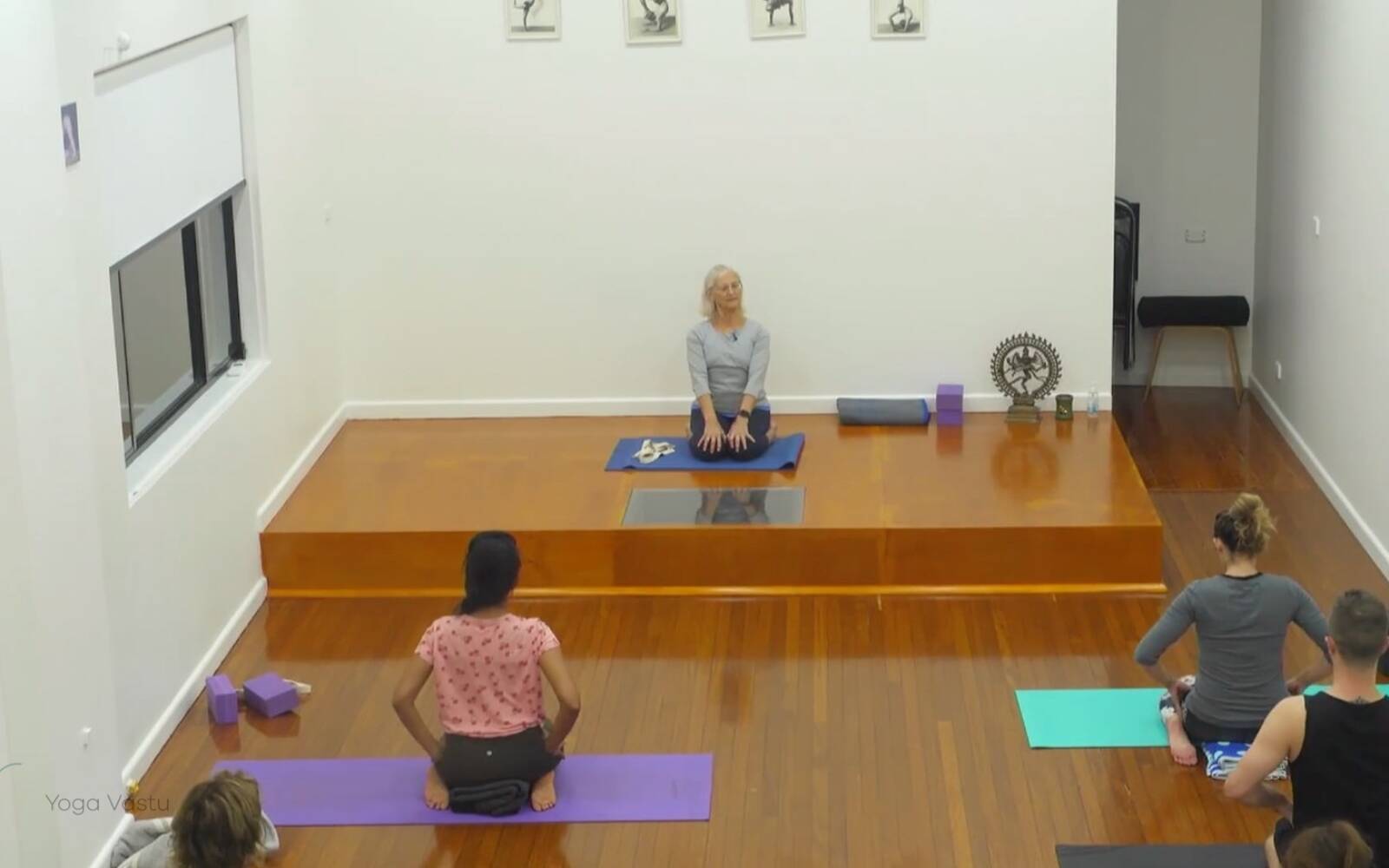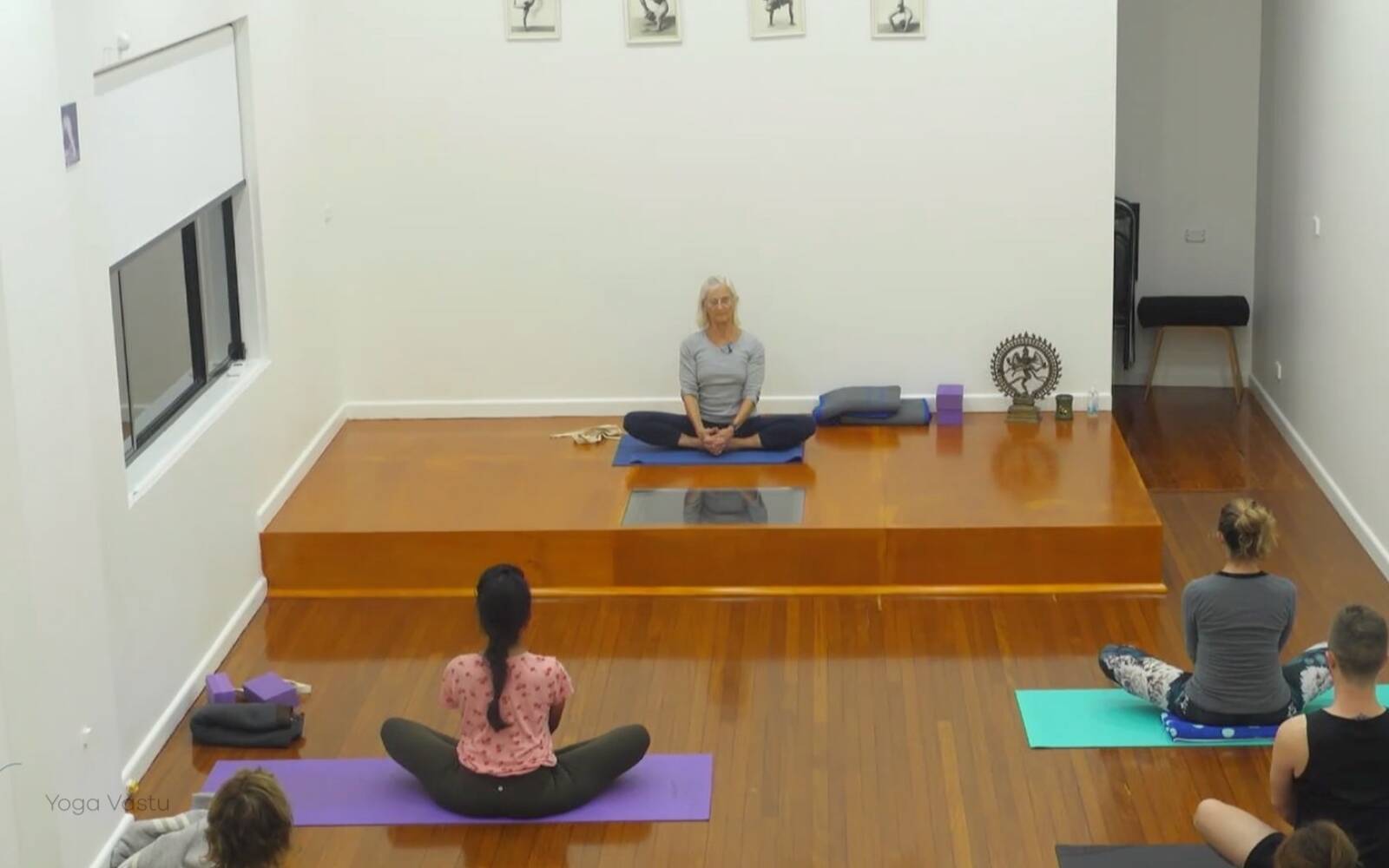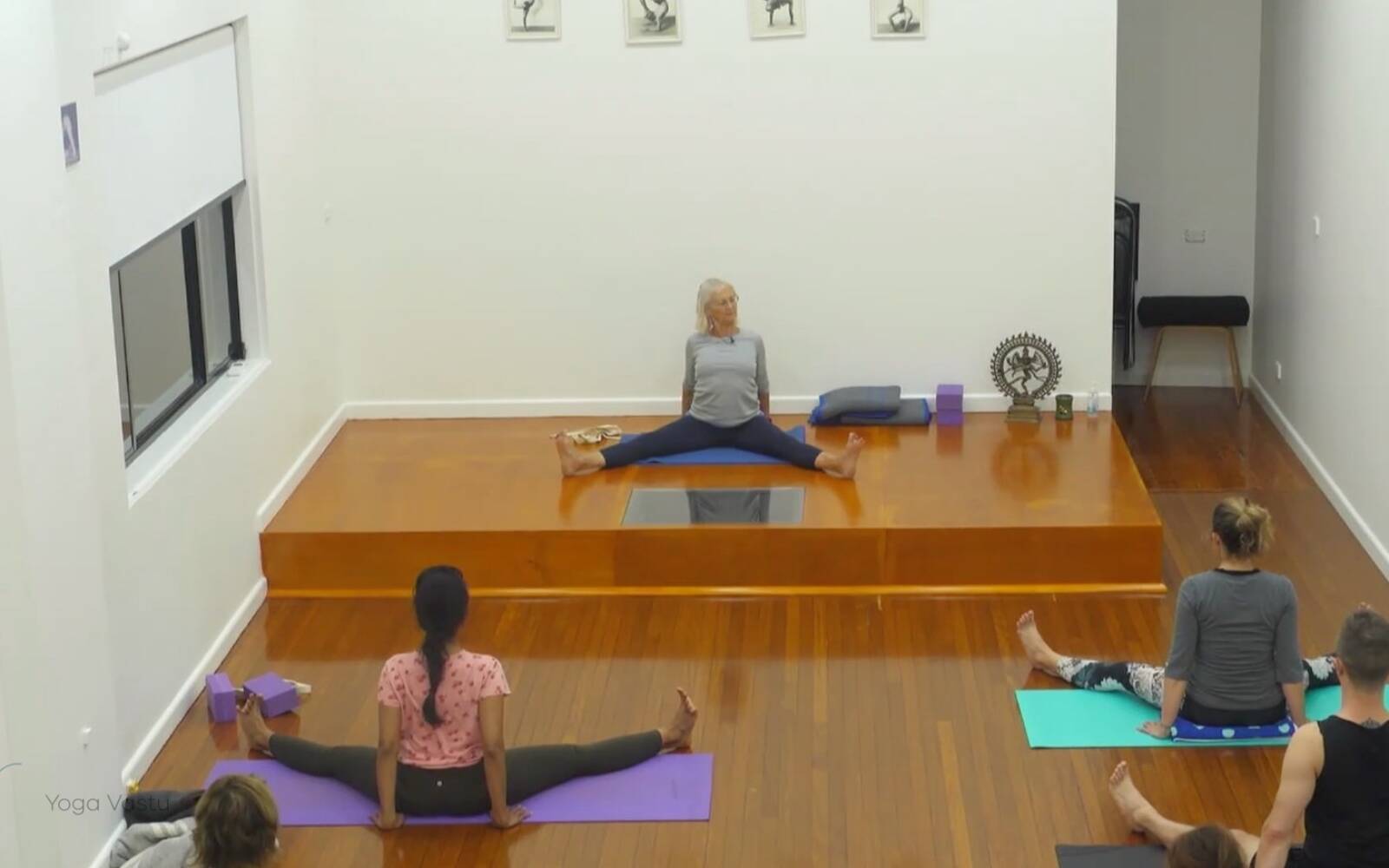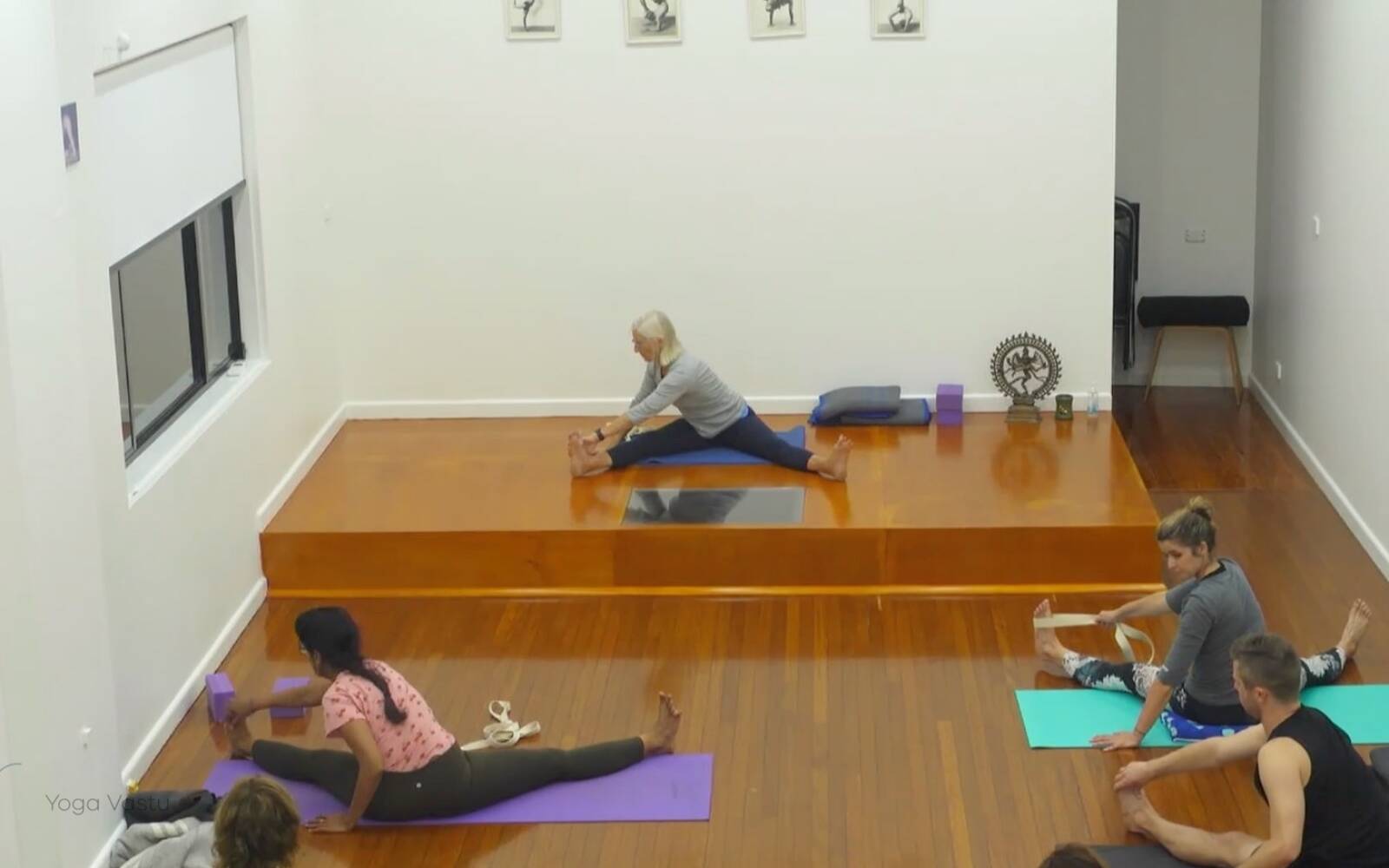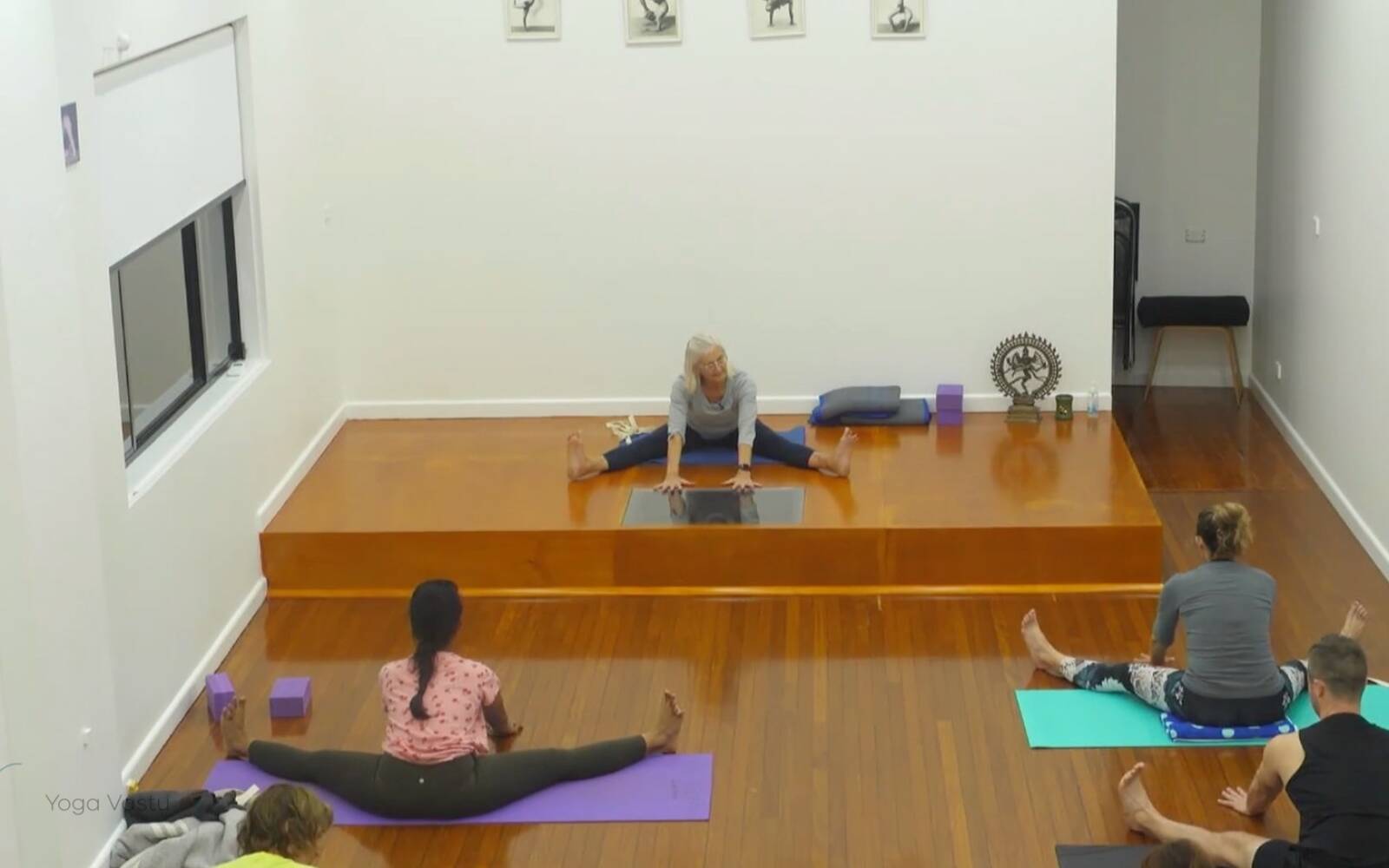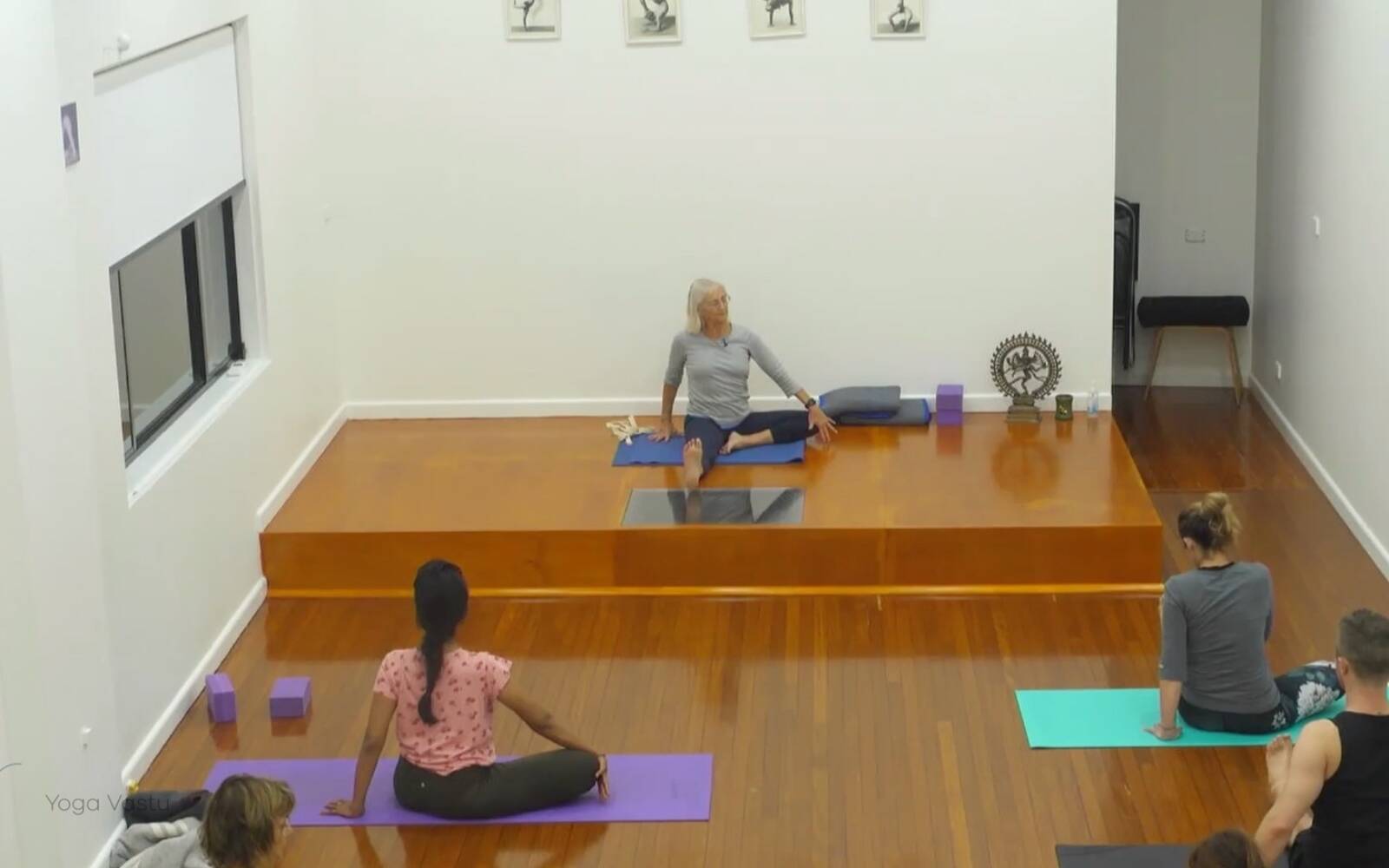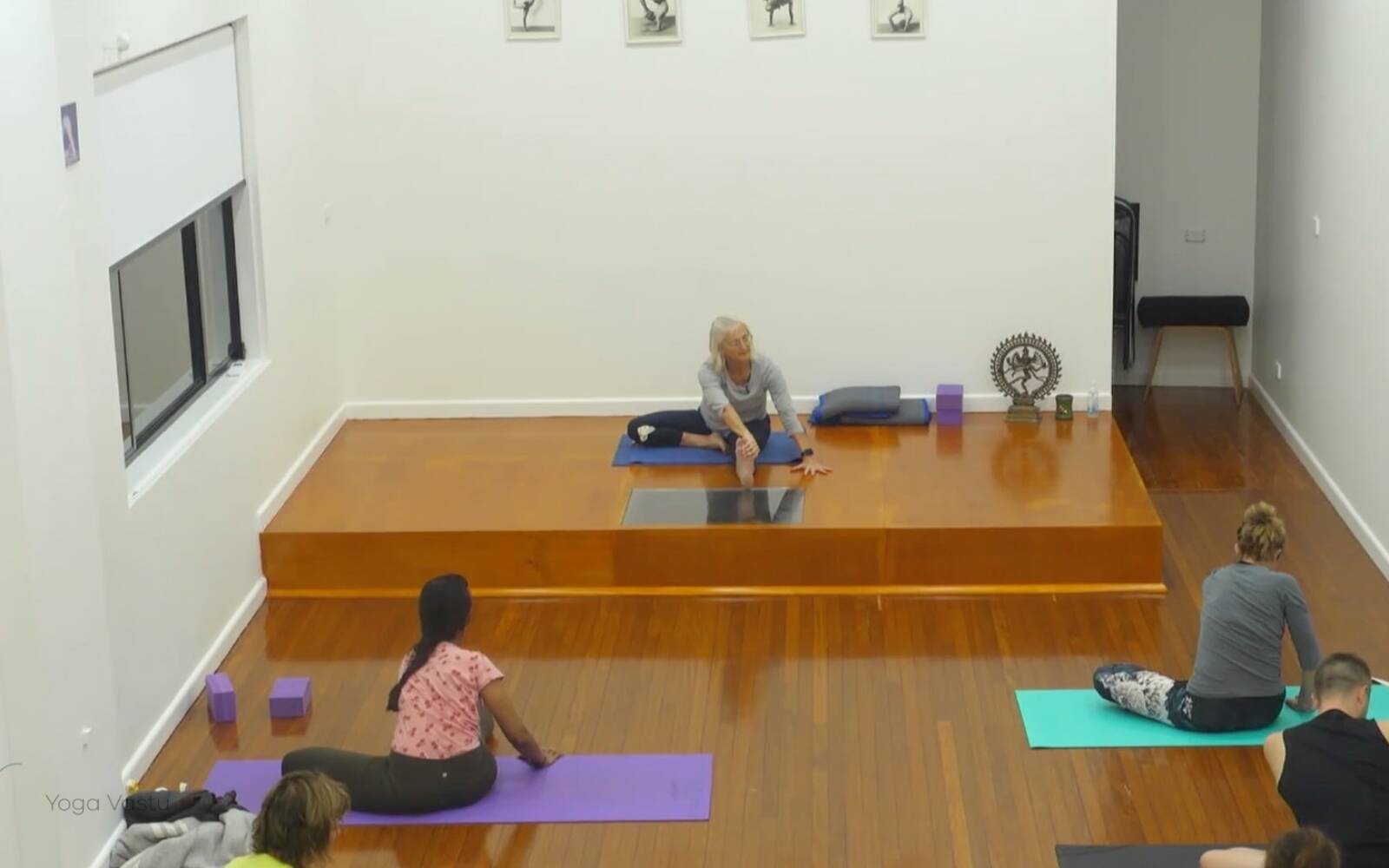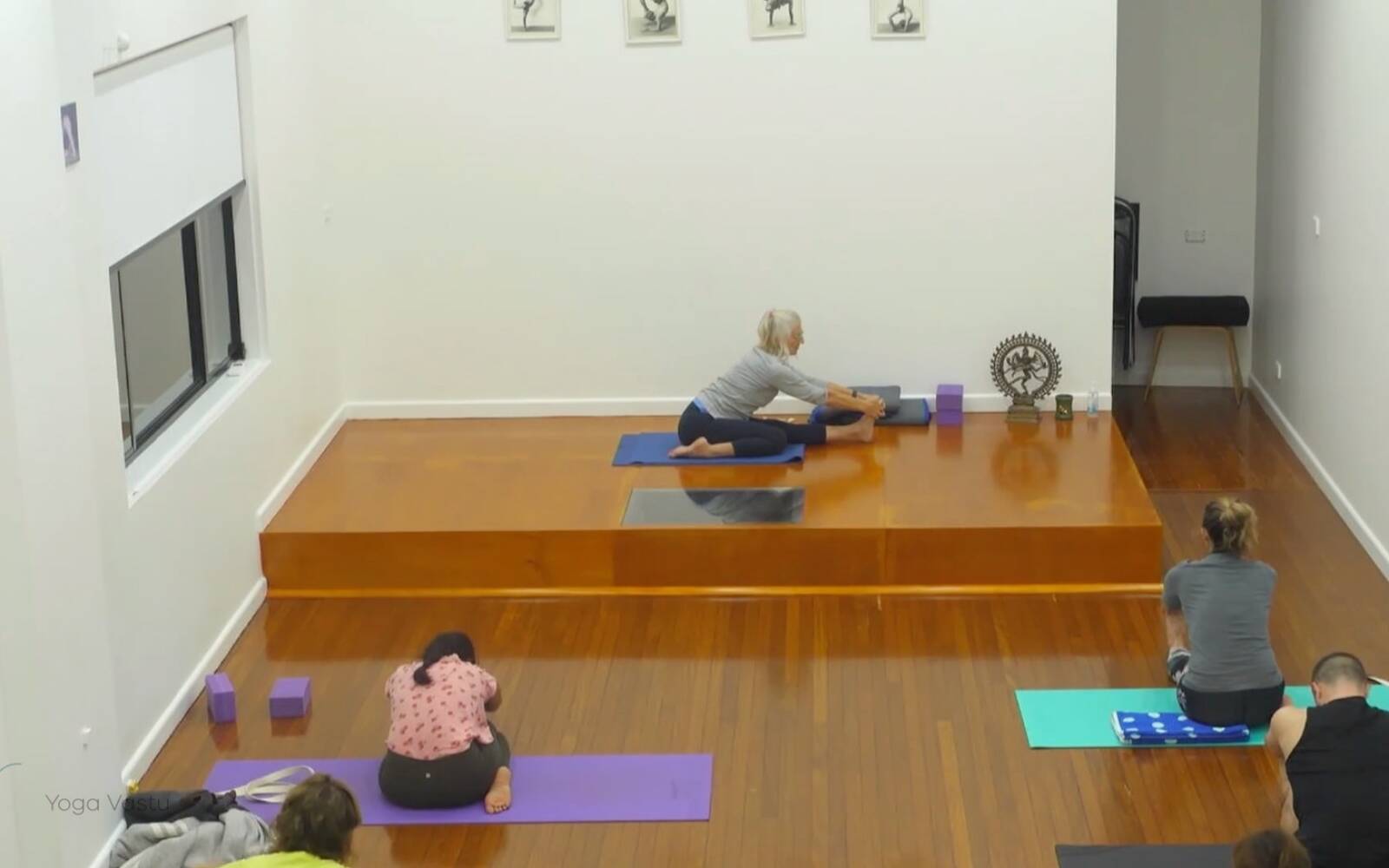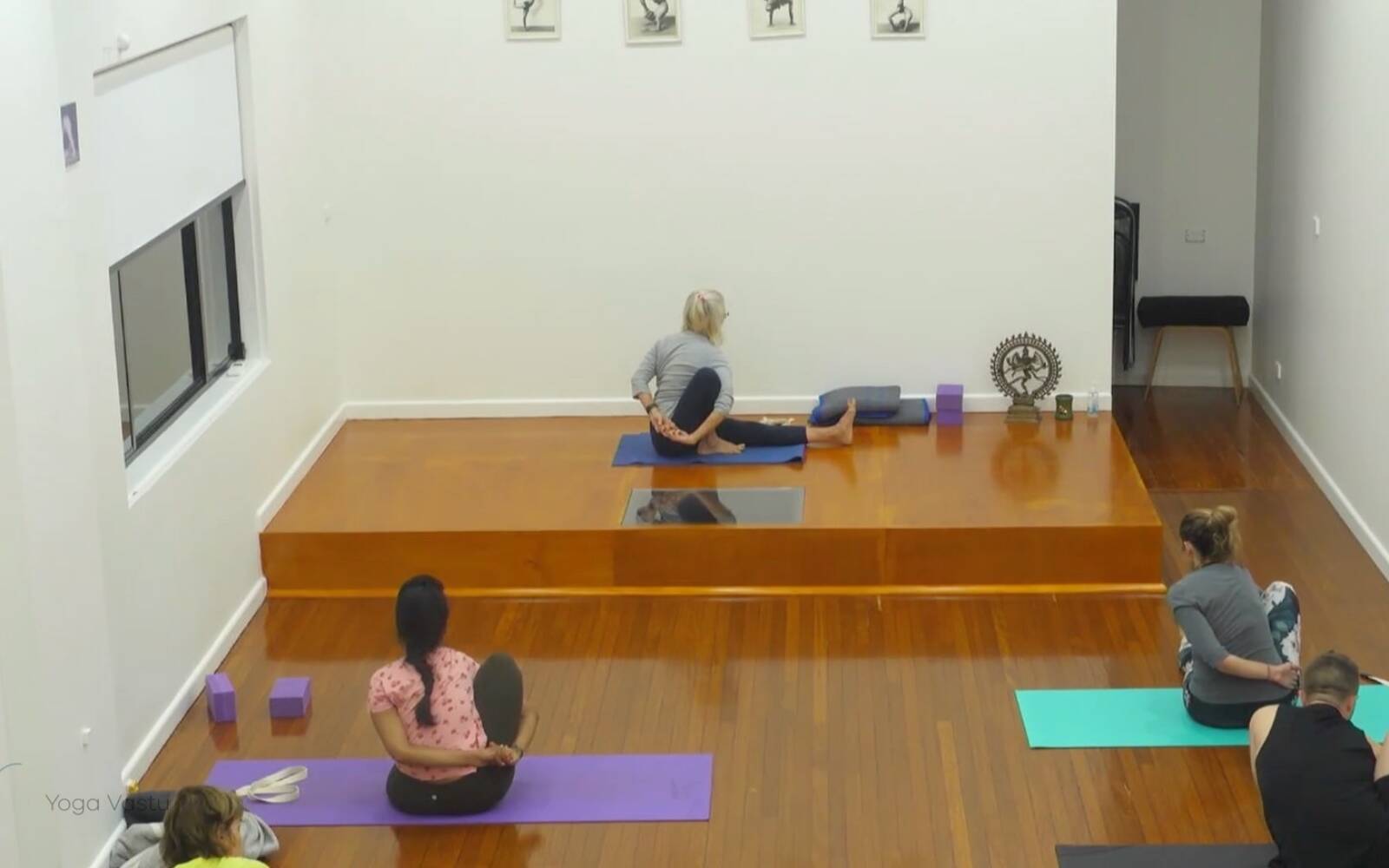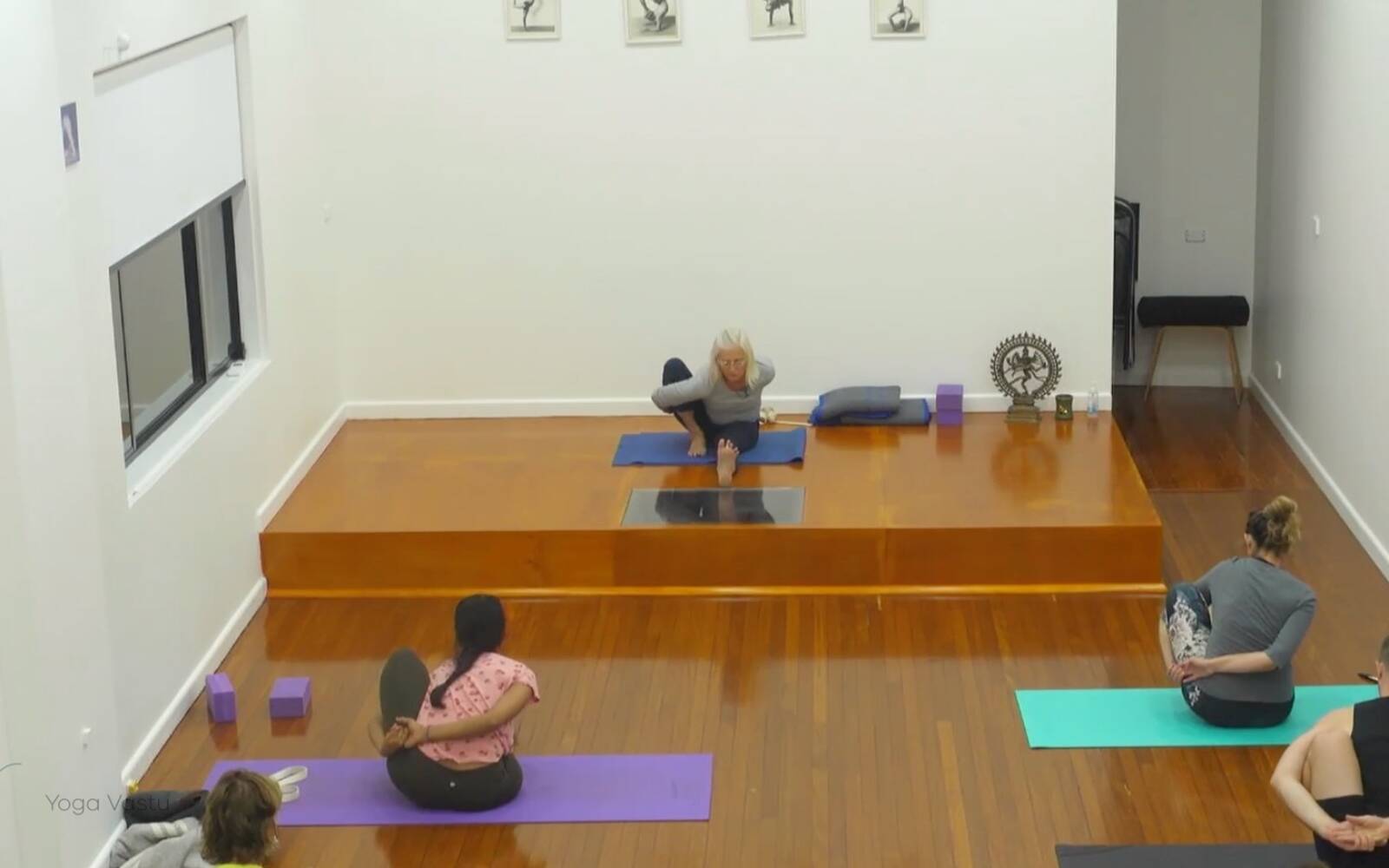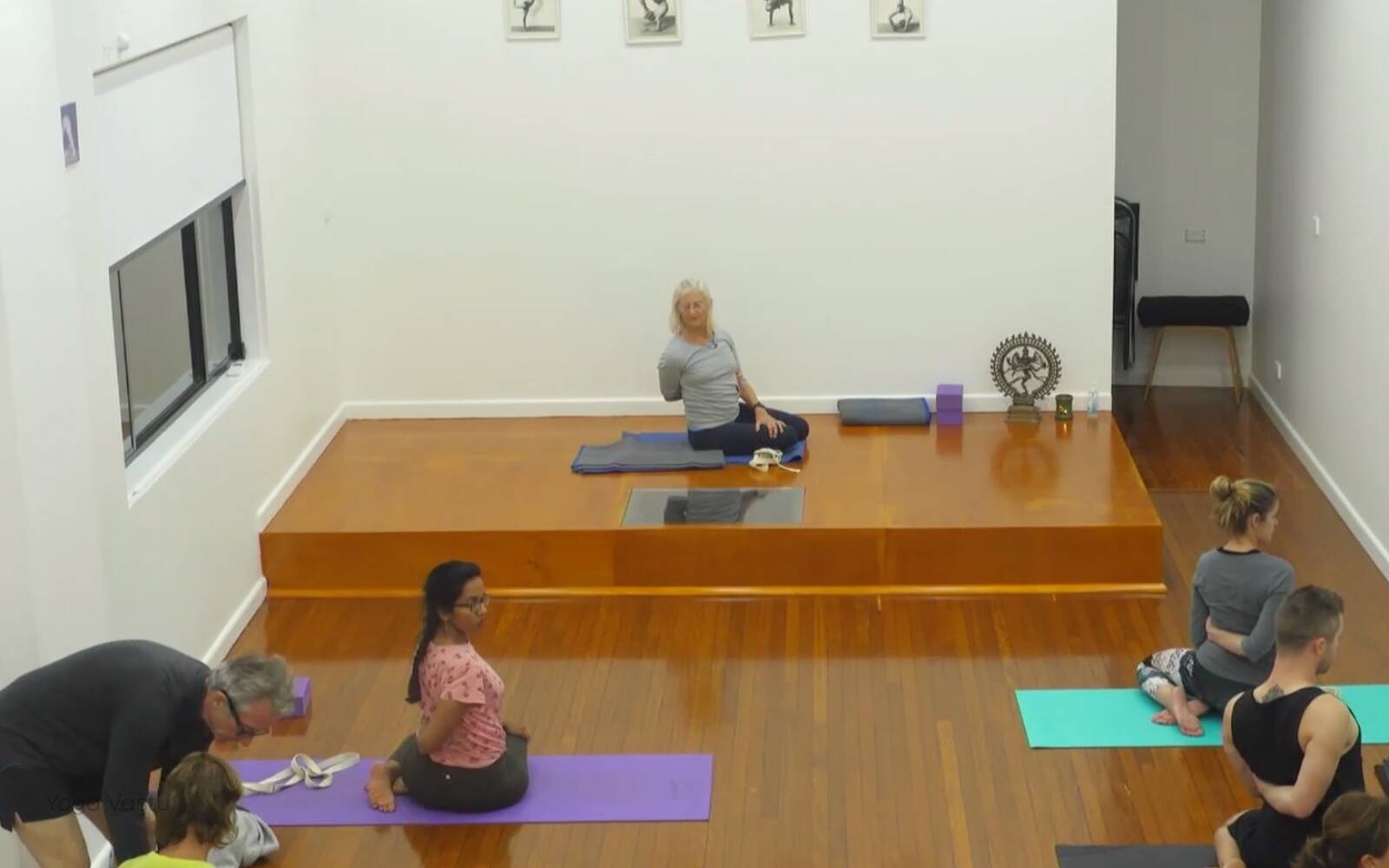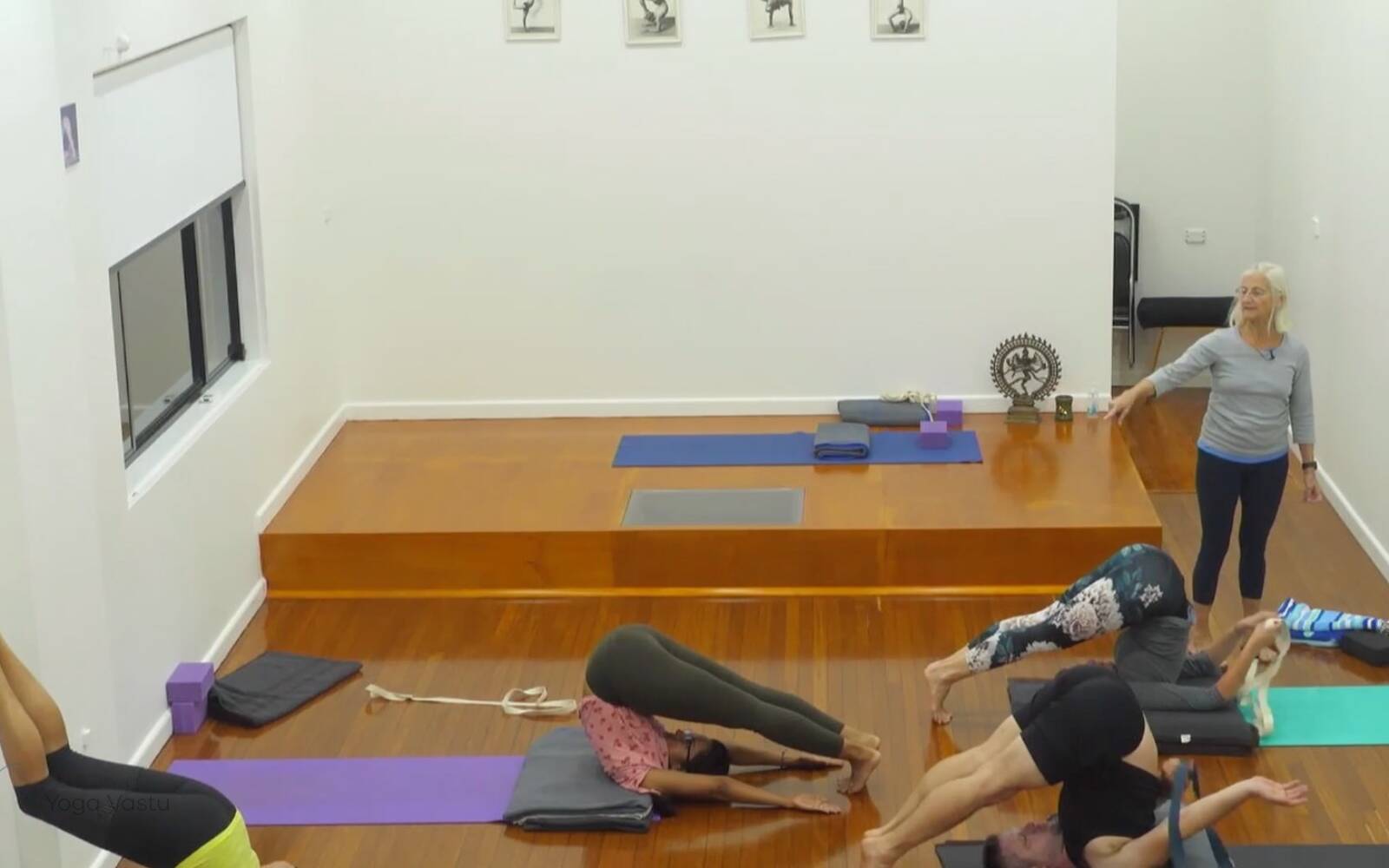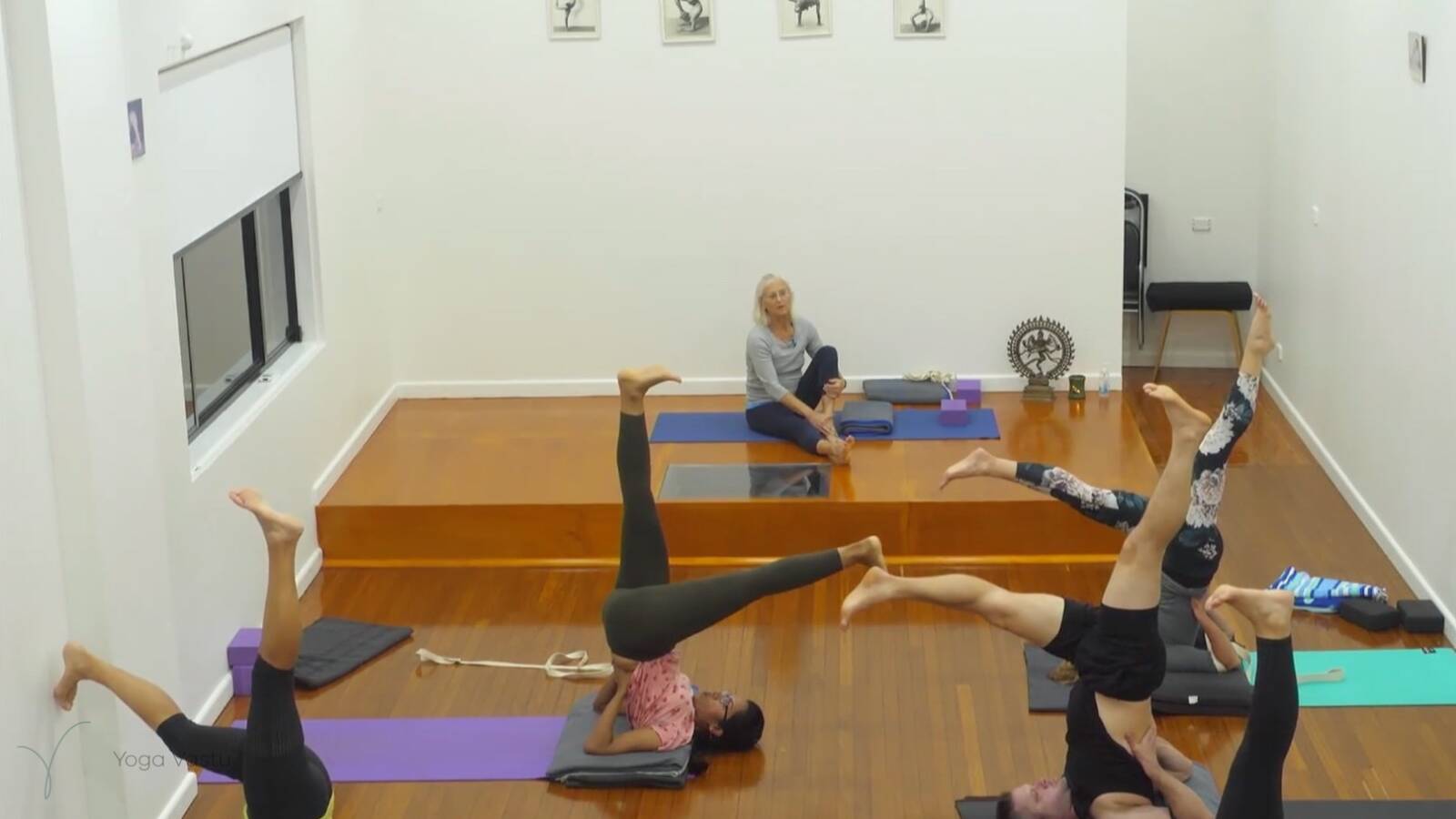In Iyengar yoga, seated poses and forward bends offer practitioners a multitude of physical, mental, and emotional benefits. These postures, often regarded as calming and introspective, play an integral role in cultivating flexibility, stability, and mindfulness.
We will start this class with some standing forward bends to warm up our legs and help extend our backs. Then, we will go through a few preparatory inversions. Then, the seated pose session will begin. Then, we will finish with a few cooling inversions, such as Sarvangasana and Halasana.
Seated poses encompass a diverse array of asanas that primarily involve sitting on the floor or a prop, such as a folded blanket or yoga block. They serve as a platform for grounding and enhancing the body’s alignment. As one settles into these postures—be it Swastikasana (Cross Pose), Baddha Konasana (Bound Angle Pose), or Virasana (Hero Pose)—the focus shifts inward, encouraging introspection and tranquility.
Seated forward bends involve a gentle folding of the body forward from the hips. Postures like Paschimottanasana (Seated Forward Bend), Janu Sirsasana (Head-to-Knee Forward Bend), and Upavistha Konasana (Wide-Angle Seated Forward Bend) guide practitioners into a profound release of tension in the spine, hamstrings, and hips.
The practice of these poses, especially for beginners, offers numerous advantages. They gently stretch the muscles, gradually increasing flexibility. Simultaneously, they engage the mind in the subtleties of alignment, fostering body awareness and mindfulness. Regular practice at the beginner stage helps build a strong foundation for more advanced postures by conditioning the body and refining focus.
Seated poses and forward bends significantly contribute to the development of one’s yoga practice. They aid in calming the nervous system, relieving stress, and promoting a sense of inner tranquility. Furthermore, these poses stimulate the digestive system, massage internal organs, and enhance circulation, contributing to overall well-being.
Incorporating seated poses and forward bends into a yoga routine requires a balanced approach. Begin with a gentle warm-up, incorporating movements that prepare the spine and hips, gradually leading into these poses. Emphasise proper alignment, ensuring that the spine is lengthened before you fold forward. Props such as blocks, straps, or bolsters can assist in achieving correct alignment and depth in the postures, especially for beginners. Holding these poses for a moderate duration — around a minute for symmetrical poses and around 45 seconds on each side for asymmetrical poses — while focusing on steady breathing helps deepen the stretch and relaxation.
Video stills from this sequence
